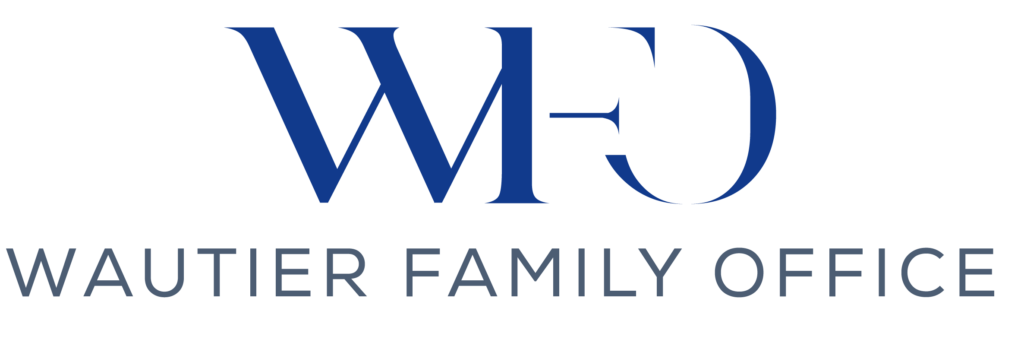How does monetary policy and inflation directly impact the day-to-day cost of living for average citizens? What tools do central banks use to control monetary policy and inflation, and how effective are they in today’s global economy? In what ways does globalization complicate efforts to manage monetary policy and inflation at the national level?
In a world where inflation has become a household term once again, this blog explores the intricate relationship between monetary policy and inflation and how it affects the average person. From the grocery store to mortgage rates, central bank decisions ripple through the economy in often invisible yet powerful ways. Readers will learn how tools like interest rates, reserve requirements, and money supply controls influence prices, borrowing costs, and even employment levels. The blog breaks down these complex mechanisms in accessible terms, revealing the real-world effects that may otherwise go unnoticed.
The post also dives into how monetary policy and inflation operate within a globalized economy, where decisions made in one country can trigger cascading effects worldwide. It highlights the lag time, imprecision, and geopolitical complications that make managing inflation an ongoing challenge. By the end, readers will come away with a clearer understanding of why economic headlines matter and how central banks’ balancing acts shape not just economies, but everyday life.
If you came of age almost any time from the mid-1990s onwards, then words like “inflation” and institutions like “The Federal Reserve” were things you heard more about in high school or college classes than in daily life.
The rampant inflation and lack of growth that characterized parts of the 1970s and 1980s had receded, and the actions of “The Fed” were no longer headline news. The pandemic of 2020, the unprecedented amounts of cheap money lavished on economies and businesses, and the after-effects of that firehose of cash being turned firmly “on” for several years caused a bout of inflation that has made an entirely new generation intimately familiar with inflation, monetary policy, and the role of the Federal Reserve.
The subtle machinery of the financial system and monetary policy might be more widely known now, but likely, it’s still not widely understood. This is a curious state of affairs for a force that shapes the prices we pay at the grocery store, the interest on our mortgages, and the strength of our currencies. This piece aims to simplify and highlight how monetary policy and globalization are inextricably linked, magnifying the effects of economic decisions across borders and into households.
Table of Contents:
Introduction to Monetary Policy
Understanding Inflation and Cost of Living
Tools of Monetary Policy and Their Role
Real-World Impact on Average Citizens
Introduction to Monetary Policy
Monetary policy refers to the actions central banks take to manage a country’s money supply and interest rates in pursuit of broader economic goals. These goals are often price stability, maximum employment, and moderate long-term interest rates. Institutions like the U.S. Federal Reserve, the European Central Bank, and the Bank of Japan act as the stewards of, and guardians against, monetary policy and inflation, respectively. Their role is to adjust levers behind the scenes to either stimulate or cool down the economy. The main tools they use are all mechanisms to control the flow of money.
Understanding Inflation and Cost of Living
Inflation is simply the rate at which prices for goods and services rise over time. A little inflation is a sign of a growing economy. Too much indicates that consumers’ purchasing power has begun to erode. The cost of living and what it takes to maintain a standard lifestyle are closely tied to inflation. Central banks use different means of measuring this, but in the United States, preferred indicators are the Consumer Price Index (CPI) and the Personal Consumption Expenditures Price Index (PCE). These indices track the average change over time in the prices consumers pay for a basket of goods and services, from groceries and gasoline to housing and healthcare.
When inflation is under control, incomes and prices tend to move in tandem. But when inflation spikes, wages often lag behind, leaving families squeezed. So, the question naturally arises: what drives these price increases? Usually, it’s a mix of domestic policy choices and global forces. For example, in the years following the onset of the pandemic, cheaper money via lower interest rates and government policies that encouraged consumption (e.g. stimulus checks) while limiting certain options (i.e. travel) led to a boom in home prices and the costs of renovating homes, as more dollars changed a mostly stable pool of assets (home prices) and service providers (skilled tradespeople).
Tools of Monetary Policy and Their Role
Central banks don’t have infinite tools, but they wield the ones they have with precision.
Adjusting interest rates is the most visible and arguably most potent tool of monetary policy and inflation. When a central bank raises rates, borrowing becomes more expensive. This discourages consumer spending and business investment, helping to slow inflation. Conversely, cutting rates makes credit cheaper, encouraging more economic activity. For the average citizen, these changes are felt in mortgage payments, credit card interest, auto loans, and student debt.
In a globalized market, however, interest rate decisions in one country can set off domino effects elsewhere. When the Federal Reserve raises rates, capital often flows out of developing economies and back into dollar-denominated assets, causing emerging market currencies to fall. That, in turn, increases the cost of imports and worsens inflation abroad—even if those countries didn’t change their own policies.
Another lever central banks pull is the money supply itself. Expanding the money supply through policies like quantitative easing can boost spending and investment during an economic slowdown. But this carries risk. As noted in the example above, inflation can quickly spiral if too much money chases too few goods and services, especially in the wake of global supply chain bottlenecks. Conversely, contracting the money supply by tightening lending conditions can curb inflation but may also stifle growth and increase unemployment.
Monetary policy and inflation again collide in this scenario. A globally integrated economy means capital, goods, and labor move fluidly. A sudden tightening in money supply in one region can choke off funding for cross-border projects, delay international trade deals, or spike commodity prices.
Central banks also manage liquidity in the economy by buying and selling government securities. When the central bank buys bonds, it injects money into the banking system, making credit more available. When it sells bonds, it pulls money out, reducing the money supply. While seemingly technical, these moves affect everything from the interest rates on savings accounts to the availability of small business loans.
By altering the amount of reserves banks are required to hold, central banks can either amplify or dampen lending. Lowering the reserve requirement frees up capital for banks to lend, while raising it can slow down the economy. These changes directly influence how easily consumers and businesses can access credit, impacting demand and inflation. In emerging markets, where banking systems may be more fragile, changes in global credit conditions can be even more destabilizing. The reserve requirement is not just a domestic tool; its effects can ripple outward, especially when global investors react swiftly to policy shifts.
Transmission to the Economy
Monetary policy and inflation reach households and businesses through a complex web of financial institutions, credit markets, and psychological expectations. This process, known as the transmission mechanism, is how policy changes eventually influence the broader economy.
When central banks raise or lower interest rates, banks and lenders are the first to feel the impact. Higher rates increase the cost of borrowing for banks themselves, which in turn translates to more expensive loans for consumers and businesses. Mortgage rates rise, credit card interest grows steeper, and car loans become harder to justify. The result is a cooling effect on consumption as households delay large purchases, tighten their belts, and redirect money toward debt repayment.
Monetary policy and inflation both affect investment decisions and hiring on the business side. A company facing higher borrowing costs may postpone expansion plans or delay hiring, particularly in industries sensitive to financing costs like real estate, construction, or manufacturing. If businesses anticipate a slowdown in consumer demand, they may also become more conservative with pricing and payroll decisions.
In a globalized economy, this transmission is not limited to national borders. U.S. interest rate hikes, for example, influence foreign banks’ lending practices, global investment flows, and even pricing strategies in export-driven economies. Multinational corporations must factor in currency fluctuations, capital costs across regions, and shifting consumer sentiment in different parts of the world.
Inflation Management
The core purpose of modern monetary policy is to ensure price stability, which translates to keeping inflation in check while supporting sustainable economic growth. In practice, this means that during periods of high inflation, central banks typically raise interest rates to reduce excess demand in the economy. The logic is straightforward: make borrowing more expensive, curb spending, and decrease prices.
Yet managing monetary policy and inflation is more art than science. The timing and effectiveness of rate hikes can vary widely. Policy changes often take months to ripple through the economy. Consumers may continue spending despite higher rates, or businesses may absorb costs instead of passing them on to customers, muting the immediate effects.
The balancing act is delicate. If rates are raised too aggressively, the economy can slip into recession. If central banks move too slowly, inflation can become entrenched, requiring even harsher measures down the line.
In a global context, controlling inflation becomes even more complex. Prices for essential goods (e.g., oil, food, and semiconductors) are set in global markets. Local interest rate changes may do little to influence global supply dynamics. Worse still, efforts to tame domestic inflation may amplify problems elsewhere. A stronger currency, resulting from rate hikes, can suppress import costs at home while inflating food and fuel prices abroad.
Real-World Impact on Average Citizens
At the heart of all this policy maneuvering is a simple question: How does it affect everyday people? For most, the impact of monetary policy and inflation is felt not in economic forecasts but in household budgets. When inflation is high and monetary tightening begins, the first casualties are often purchasing power and affordability. Wages rarely keep pace with rising prices in real time, meaning families can buy less with the same income.
Essential expenses (e.g., food, rent, energy, and transportation) make up the largest portion of most household budgets. Inflation in these categories hits hardest, especially for lower-income households with little discretionary spending. When monetary tightening kicks in, higher interest rates can compound the burden. A variable-rate mortgage becomes more expensive, and credit card debt accrues interest faster.
On the flip side, savers may see some benefit. Higher interest rates often translate into better returns on savings accounts and certificates of deposit, though these gains can be eroded if inflation outpaces returns. Retirees living on fixed incomes may find their purchasing power declines even as their savings grow.
Challenges and Limitations
Despite its central role in shaping modern economies, monetary policy remains an imperfect tool that operates with notable constraints and blind spots. Among the most persistent challenges is the lag time between action and effect. It can take several quarters, sometimes longer, for a change in interest rates or money supply to filter through the financial system and manifest in inflation data or employment trends. This delay forces central banks to make decisions based on projections rather than real-time outcomes, often navigating a fog of economic uncertainty.
Even when correctly timed, monetary policy lacks surgical precision. It acts on broad levers that affect the entire economy, not specific sectors or income groups. A rate hike designed to cool housing inflation might also depress manufacturing activity or slow consumer spending across the board. Similarly, a rate cut to stimulate investment could inadvertently fuel asset bubbles or widen wealth inequality by disproportionately benefiting those with significant capital holdings. The inability to fine-tune outcomes makes policy design both a technical and political balancing act.
These limitations are magnified by external forces beyond any central bank’s control. Global commodity prices, supply chain disruptions, climate shocks, and geopolitical conflicts all shape inflationary trends in ways that interest rates cannot fully offset. The 2021–2023 inflation surge underscored this reality: supply shocks from the COVID-19 pandemic, compounded by Russia’s invasion of Ukraine and climate-related crop failures, drove price spikes that monetary tightening alone could not immediately reverse.
In a globally connected financial system, complexity deepens. As monetary policy and inflation intersect and combine with highly mobile capital flows, policy decisions in one country reverberate across borders.
Key Takeaways
The most useful mental framework you could take from this piece may be that monetary policy and inflation management are about balance—the balance between the twin imperatives of price stability and economic growth. This balance must occur while navigating an unpredictable and globalized landscape.
Pursuing this balance influences everything from mortgage rates and grocery bills to corporate investment strategies and international capital flows. It can tame inflation, support employment, and safeguard purchasing power when deployed effectively. However, its timing, precision, and scope limitations mean it is rarely a complete solution.
For average citizens, the impacts are both subtle and profound. Monetary policy shapes the cost of living not in isolation but as part of a broader economic tapestry that includes government spending, wage dynamics, market psychology, and global events.
Central bank actions now transcend national borders and affect billions. For citizens, grasping these mechanisms isn’t merely about economics but about making sense of the forces shaping their financial reality, from the checkout line to the housing market to their long-term savings. The invisible hand of policy may be hard to see, but its fingerprints are everywhere.




